Types of sheets and rules for caring for them
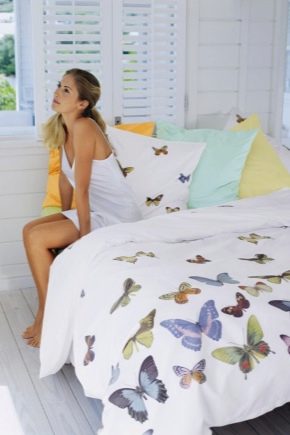
The quality of your night's sleep determines how productive your day will be. The bedding you use plays a big role in how well you sleep, and the sheet is an important element. Consider the types of sheets on the Russian market, the features of different materials, as well as the rules for caring for them.
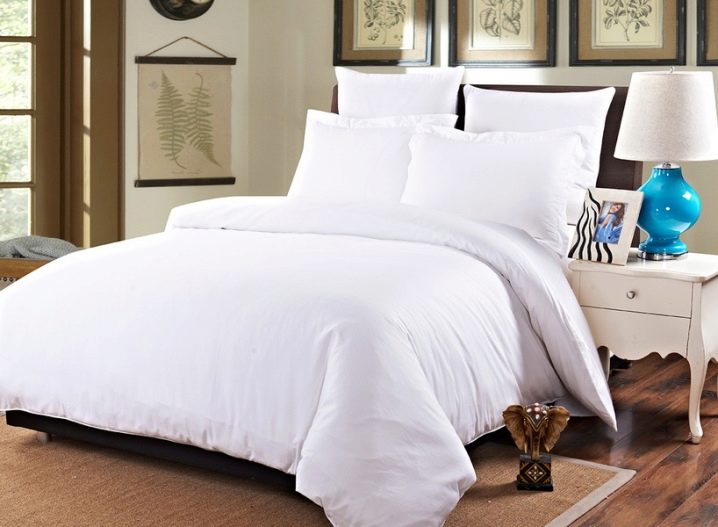
Peculiarities
A sheet is a piece of fabric of a certain shape, which covers the bed over the mattress. The main requirements for this element are softness, hygiene, hygroscopicity and ease of maintenance. Adult products are usually rectangular in shape to match the shape of modern beds.
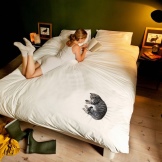

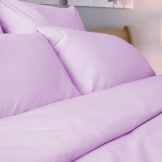

In the case of a bed for small children, the variety of shapes is wider (for example, a sheet of the same shape or an oval product is laid in a round bed). Higher requirements are imposed on children's sheets - they should be easy to wash, absorb a lot of moisture, "breathe" and be hypoallergenic.
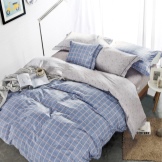

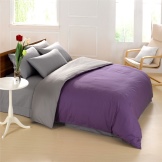
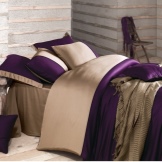
Varieties
Now on the Russian market there is a wide range of sheets that differ both in size and materials used, and in the principle of manufacture. There are two structural types of products:
- classic, the edges of which can be simply tucked under the mattress;
- options with an elastic band that are tightly attached to the mattress.

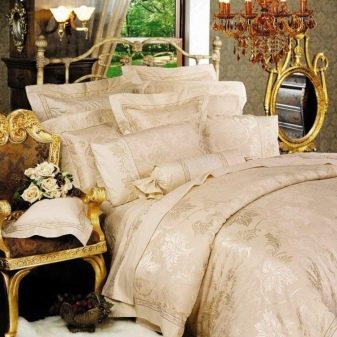
Both are available in a number of standard sizes, with single and double sheets being the most common. When choosing a sheet with a sewn-in elastic band, special attention should be paid to the configuration of the bed. If your sofa or bed has noticeable protrusions along the edges (back, armrests, decorative elements), then the product with an elastic band will most likely have to be abandoned, since it will be very difficult to fix it.

Another important characteristic of bedding is thread density. It is believed that the higher this figure, the softer the product. However, as practice shows, a density of at least 450 threads per square centimeter is quite enough. Thicker garments are significantly more expensive and can be even rougher to the touch than options with fewer threads.
How to choose the size?
Despite the fact that in the Russian Federation there is a GOST regulating the size of bed linen, in fact, options are available to buyers for any size of mattresses used. Simple rules will help you choose the right size for a classic sheet:
- the length of the product must be no less than the sum of the length and height of the mattress;
- the width of the product should be slightly more than the sum of the width of the mattress and its doubled height.
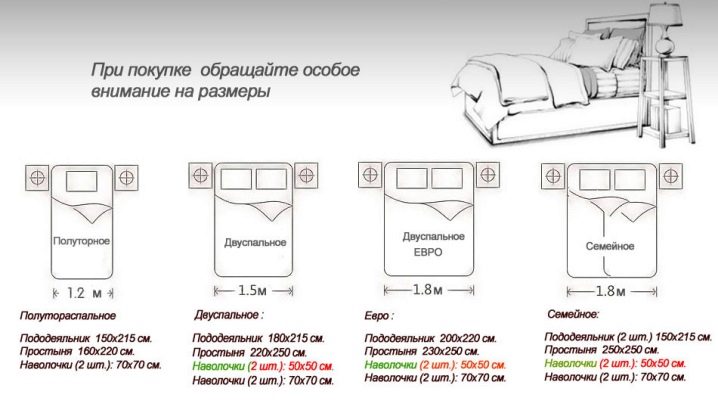
The same rules apply to the selection of the option with an elastic band, only here you need to more accurately calculate the dimensions so that the product fits snugly to the mattress.
Material
Most of all, the price, comfort and practicality of bed linen depend on the type of material used for its production. Sheets made from different fabrics require completely different care. Consider the features of the most common materials.
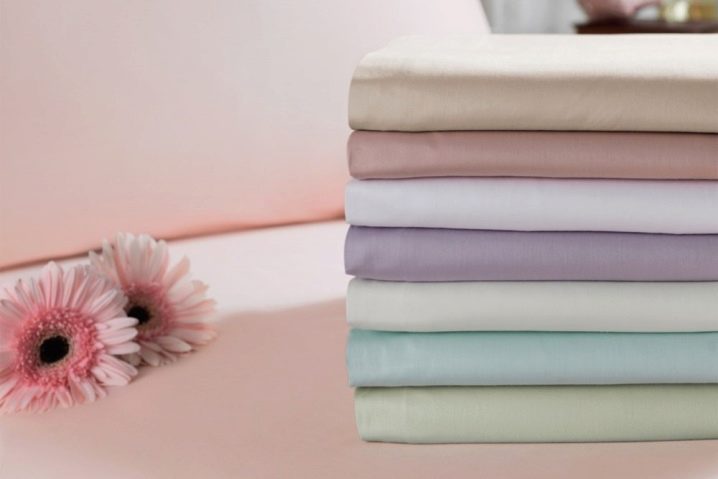
Atlas
A special weaving method is used to create this fabric. Atlas is distinguished by shine, smoothness and tenderness. This effect is achieved by interweaving vertical warp threads with horizontal ones. The main threads for creating satin are made mainly from silk.Additional threads can be made of cotton, viscose, they can also be synthetic. Satin linen is very durable with high comfort. It absorbs moisture well, retains its shape for many years, does not accumulate static, does not cause allergies and irritation. Nothing says taste like a luxurious satin sheet. Such underwear looks especially impressive in red tones.
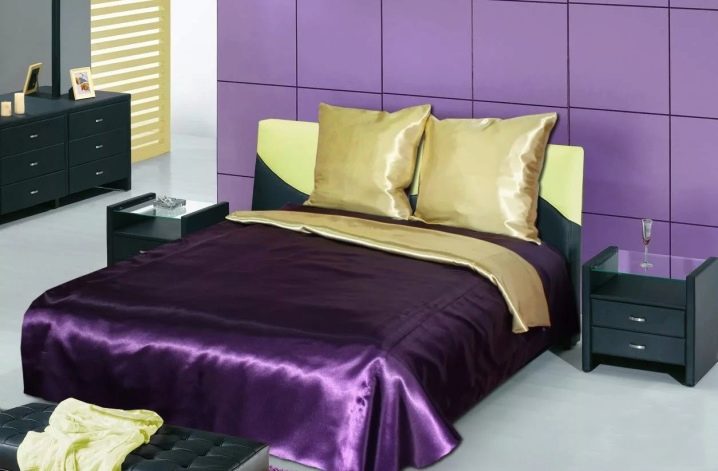
Atlas cannot be washed in hot water, otherwise it will quickly lose its shape. Machine wash is also undesirable. You can iron it only without steam, through a layer of fabric from the inside out. At the same time, the iron should not be hot.
Bamboo
Being a relatively new product in Russia, bamboo fiber bedding has long won the hearts of millions of buyers in Asian countries. This material has many advantages:
- it is environmentally friendly, does not cause irritation and allergies;
- it is pleasant to the touch, it is especially soft;
- the material is very durable;
- high porosity of the fiber allows it to perfectly pass air, quickly absorb and evaporate moisture.
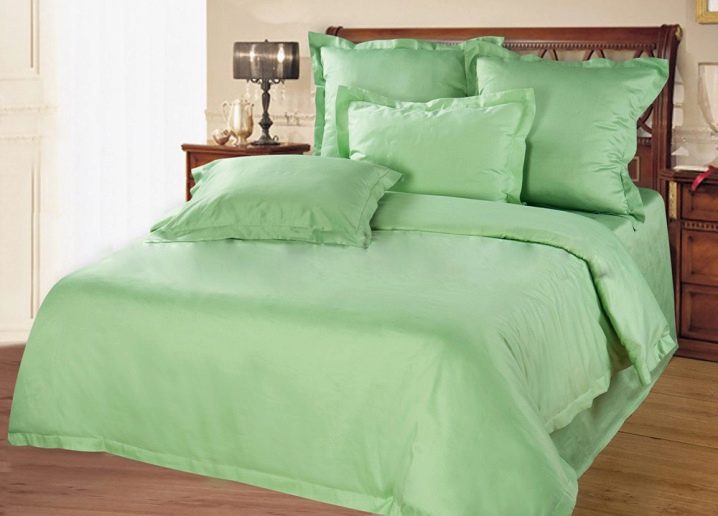
Among the shortcomings, it is possible to note increased requirements for care. Such products can only be washed on a delicate cycle without drying in a typewriter. It is not recommended to use bleaches or softeners. Bamboo linen should be ironed with a not very hot iron.
Batiste
This is a way of weaving linen or cotton threads. At the same time, due to the use of twisted yarn, a greater lightness of the material is achieved while maintaining its strength. Main advantages:
- translucency, allowing the use of fabric in decor;
- the lightness and tenderness of the material, which makes sleeping on a cambric sheet especially pleasant;
- good ability to absorb moisture;
- hypoallergenic.
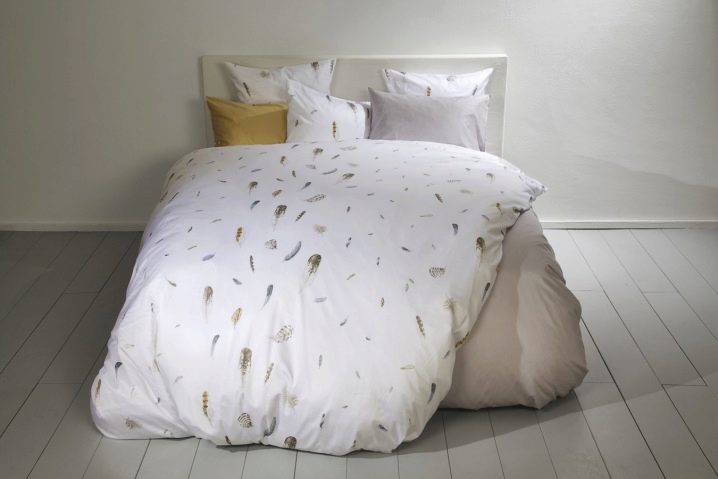
It is possible to wash cambric bed linen at water temperatures up to 30 ° C and only in a delicate mode.
Calico
This is a method of tightly weaving thick cotton threads. The main advantages of coarse calico sheets:
- long service life (fabric is almost not wrinkled, resistant to damage, retains color for a long time);
- eco-cleanliness and hygiene;
- ease.
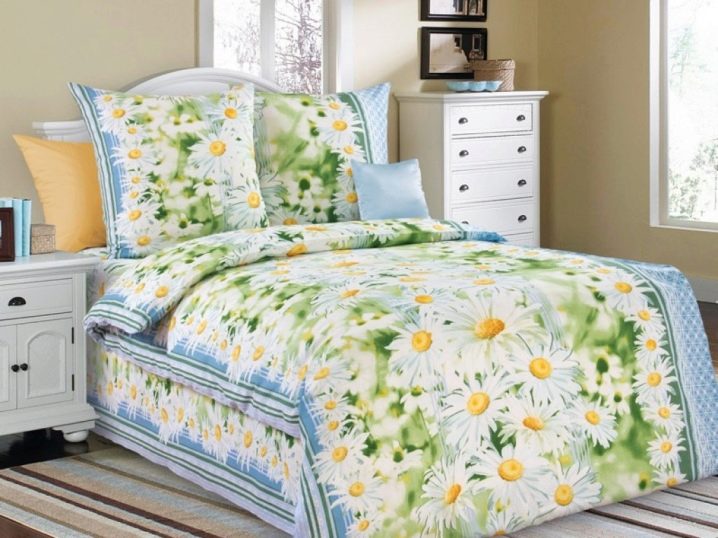
Caring for coarse calico linen is relatively simple:
- water temperature during washing for colored coarse calico - up to 50 ° С, for white - up to 90 ° С;
- you should not wash such linen together with synthetics;
- it is better to dry coarse calico products in a place protected from direct sunlight;
- iron the laundry before it dries completely.

Waffle fabric
These sheets are made from cotton. They are distinguished by increased softness, comfort, excellent moisture absorption. They need to be washed in the delicate wash mode, in water no warmer than 30 ° C.
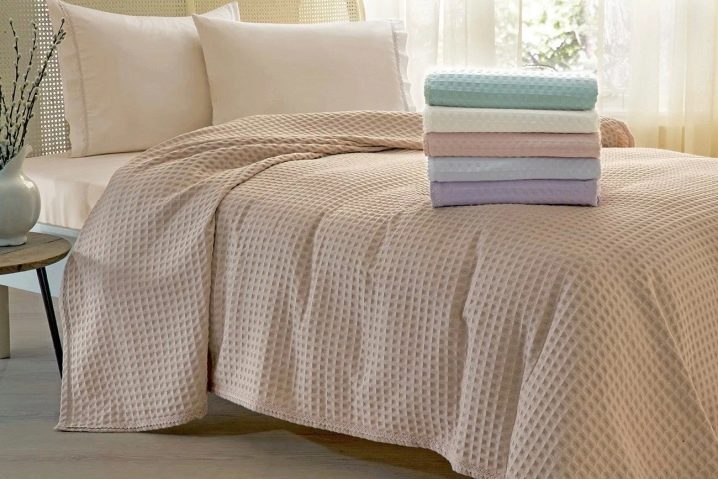
Viscose
This is an artificial fabric made from natural cellulose. Main advantages:
- strength and wear resistance;
- the ability to pass air well and absorb moisture;
- softness;
- high drying speed.
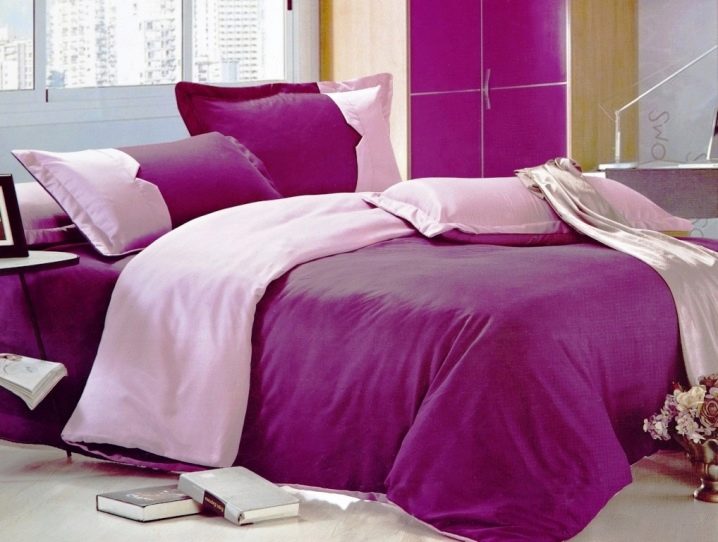
Also viscose:
- pleasant to the touch;
- does not accumulate static charge;
- very hygienic.
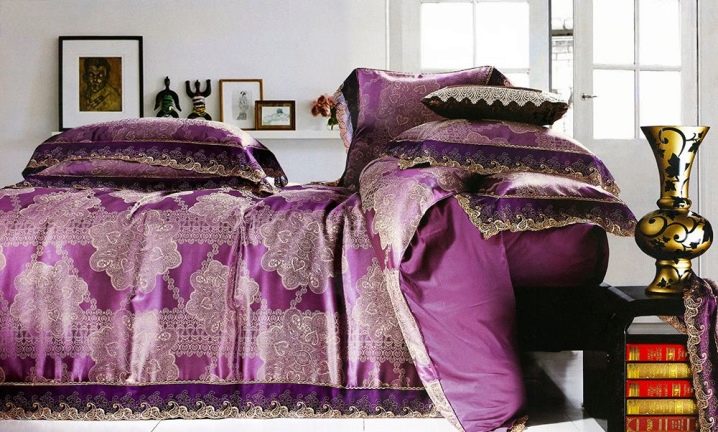
Viscose linen can only be washed in the gentle wash modes. It is better to wring it out in a typewriter, you cannot twist it. The viscose sheet should not be heated above 50 ° C. Therefore, it cannot be boiled, dried at high temperature and ironed with a hot iron.
Jacquard
This material is made from a mixture of synthetic and natural yarns. During production, a complex weaving is used, due to which a characteristic relief is formed on the surface of the fabric, which remains for many years. The main advantages of jacquard products:
- excellent aesthetic properties (it is not for nothing that elite sets are made from this material);
- high wear resistance and strength;
- the ability to dry quickly;
- lack of electrification;
- the material keeps it cool in summer and warm in winter.

Basic care requirements:
- water during washing should not be hotter than 30 ° С, bleach should not be used;
- spinning is unacceptable, and when drying, you need to protect the laundry from direct sunlight;
- you can iron such a sheet from the inside out at a temperature not exceeding 120 ° C.
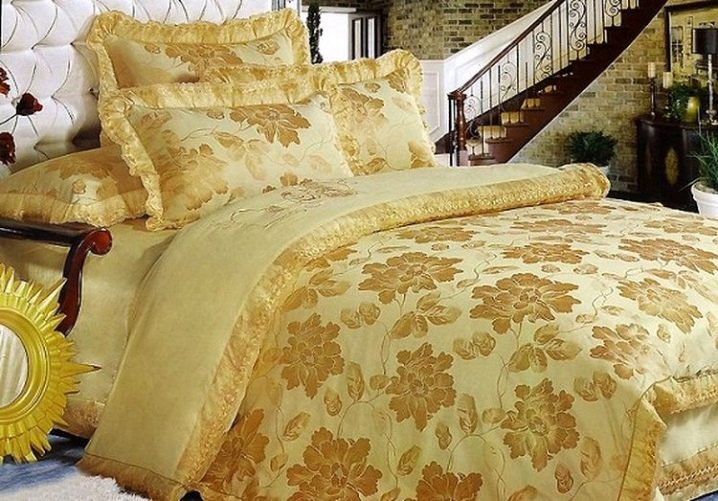
Crepe
This fabric is created by weaving silk using twisted threads. Due to this, crepe underwear is pleasant to the touch, elastic, and wrinkles a little. Care rules are similar to silk: wash only by hand in non-hot water without bleach, do not iron, avoid exposure to high temperatures, do not twist.
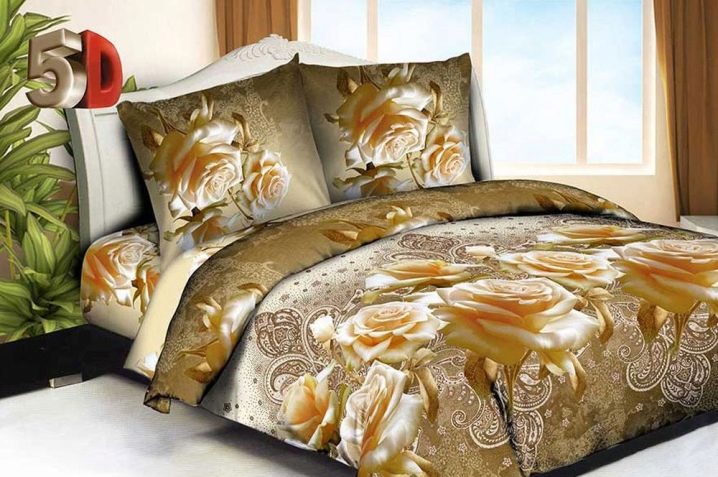
Oilcloth
In ordinary sets for adults, bed linen made of water-repellent oilcloth is not found. But among children's options, oilcloth sheets are quite common, because this material is waterproof and very easy to clean. Often, such products have an additional absorbent layer, made, for example, of polyester. Another use of oilcloth is mattress covers for bedridden patients. The features and requirements here are the same as in the case of a children's bed, only the typical sizes differ.
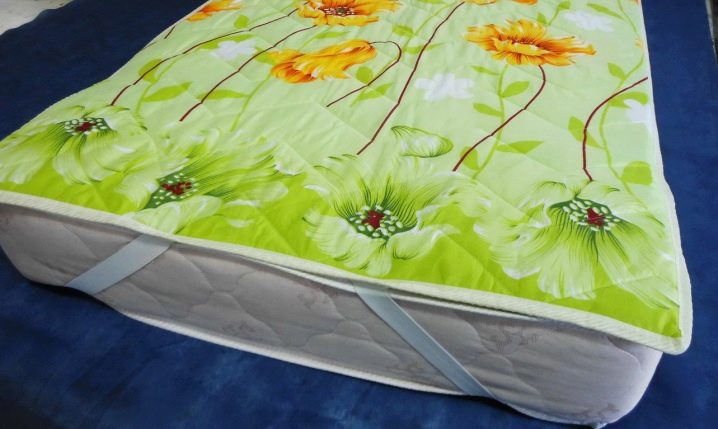
There is no need to wash oilcloth sheets; it is enough to wipe them with soapy water. Products must be protected from high temperatures, which means they should not be ironed either.
Latex
This material is very rarely used to make ordinary sheets. But in sets of lingerie for various erotic games, a black latex or vinyl sheet is very common, because latex has wonderful sliding properties and is very pleasant to the touch. Caring for a latex sheet is very simple - just wipe it with a damp cloth.
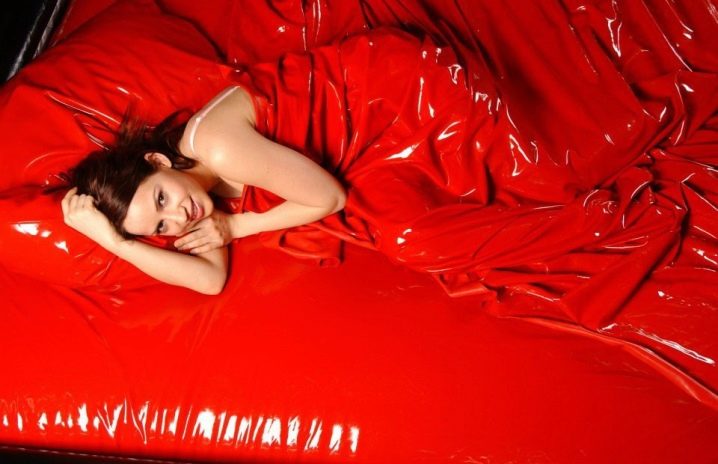
Linen
This material looks gross and too simple. But linen made of it is hygroscopic, “breathes” well, has a massage effect on a sleeping person. Such sheets are very durable, do not accumulate an electric charge, and do not cause allergies. They are environmentally friendly and even have a bactericidal effect. Products are unpretentious in care - they can be machine washed, boiled, ironed at high temperatures (especially if the material is not completely dry). One has only to avoid drying in dryers, and before washing it is recommended to lightly soap the laundry and soak it for 1 hour in warm water.
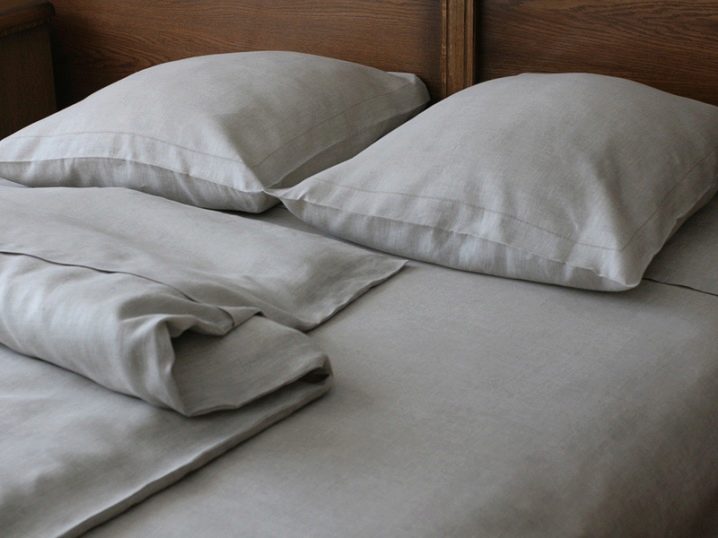
Microfiber
This material is a few micron thick woven polyester fibers. Such a sheet will last a very long time, while it retains its shape and appearance. The material is resistant to pollution, "breathes" well (therefore, it cools a sleeping person). Microfiber is also unpretentious in care - it dries quickly, tolerates washing at temperatures up to 60 ° C. But you can dry it only in a mode up to 50 ° C, and you should not boil it. It is better to iron such linen with a not very hot iron.
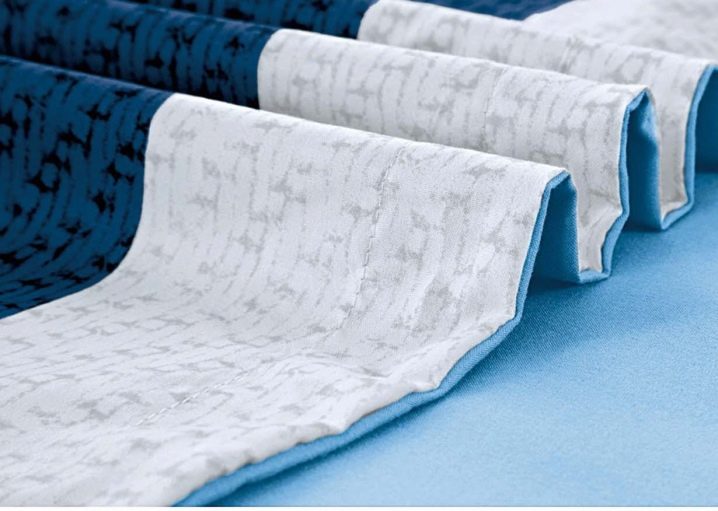
Percale
This material is a thin, high-density cotton fabric that looks like cambric. With high strength and resistance to wear, percale underwear is very light and elegant. It is pleasant to the touch and does not cause irritation. You need to wash such sheets at a water temperature of no more than 60 ° C.

Polypropylene
Polypropylene is mainly used for disposable bed sheets intended for massage or medical use. Their task is to protect furniture from contamination, and customers - from possible infection with various diseases. They are usually delivered in rolls, have a standard size of 60 x 100 cm. Since the product is thrown away after use, there can be no question of any care for them. It is enough just to provide storage in a dry and clean room at room temperature.
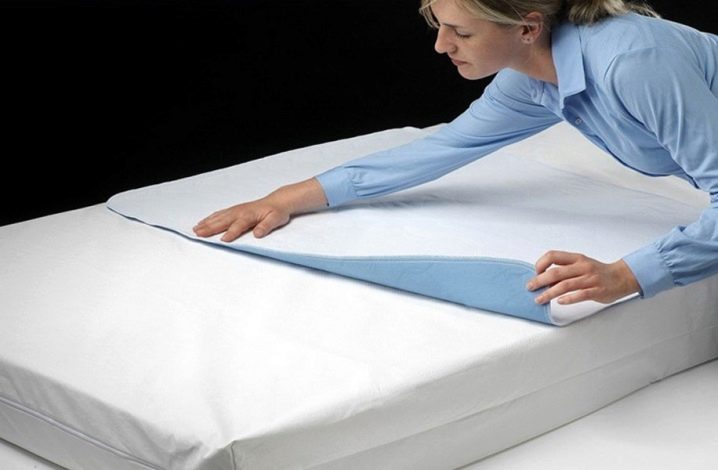
Satin
Satin is made of cotton, so it is strong, durable, soft, retains its shape and color for a long time, does not electrify, perfectly absorbs moisture and allows air to pass through. It should be washed at a temperature not exceeding 60 ° C separately from synthetics. Since the material is almost not wrinkled, it is not necessary to iron it at all.
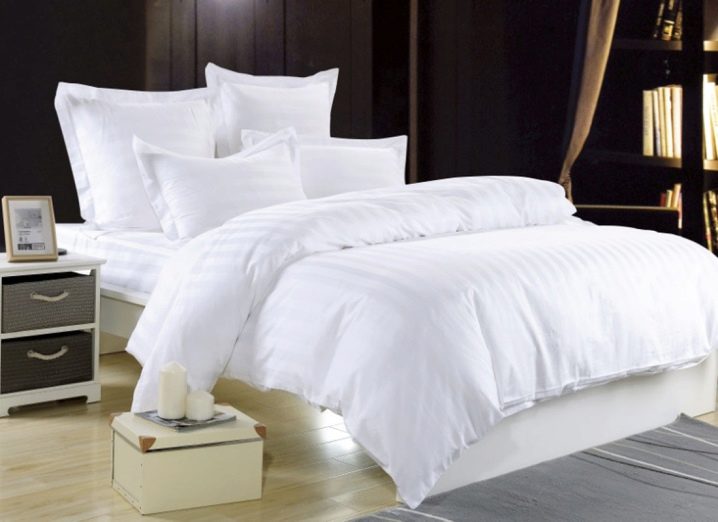
Chintz
It is a cheap cotton fabric. It is durable, tactilely pleasant, lightweight, and retains its shape well. It must be washed separately from synthetic underwear at temperatures up to 50 ° C.It is better to iron chintz at low temperature, when it is not dry yet.
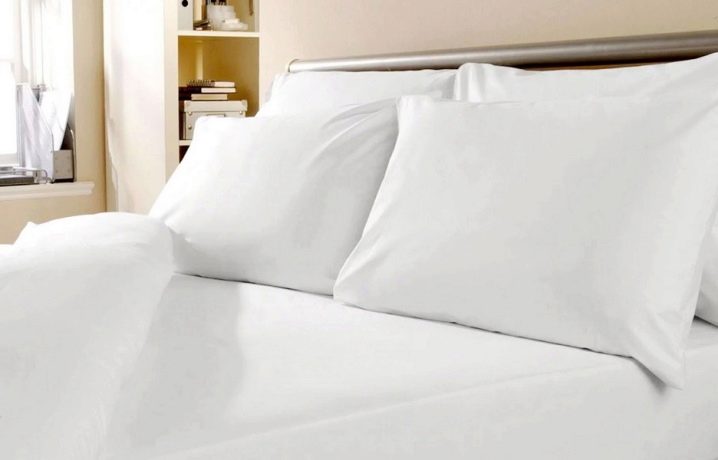
Jersey
This is a way of weaving fabric from a wide variety of threads: cotton, silk, wool, synthetics, and so on. Therefore, the degree of comfort of a knitted sheet and the conditions of care depend on the materials used in its production.
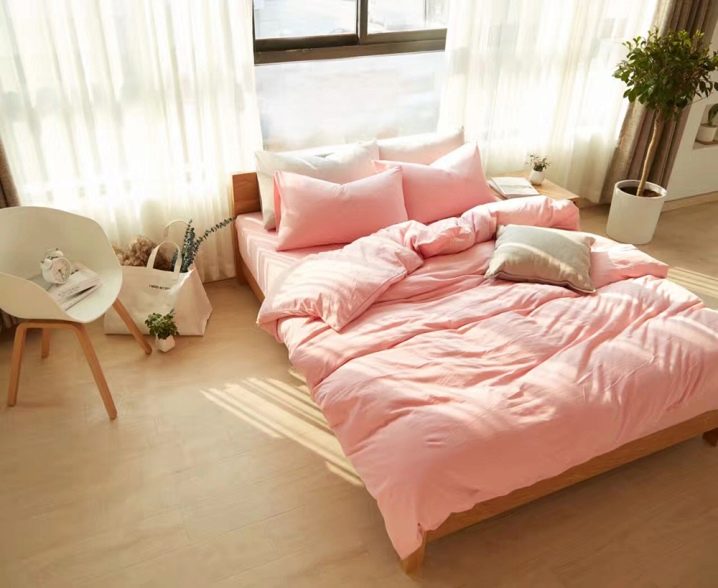
For information on how to choose a sheet for bedding, see the next video.













The comment was sent successfully.